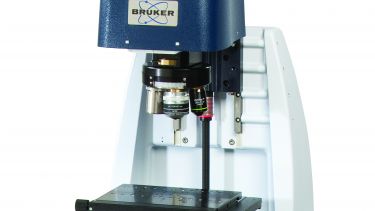Nuclear waste containers: Does the surface finish matter?
3D Optical Profilometry has been utilised by the NucleUS team to evaluate the surface finish of stainless samples and determine roughness parameters to assess the suitability of materials for nuclear waste disposal.

Within the UK, nuclear waste is generated from civil nuclear power, medical, and research facilities. It is categorised into high, intermediate and low level waste and conditioned into a suitable wasteform [treated to make it passively safe].
Intermediate level waste is commonly encapsulated into cement and stored in 304L stainless steel containers. These waste containers are stored above ground awaiting final disposal and will remain in service for 150 years1.
The surface finish of 304L stainless steel can be adapted for different applications. This research aims to determine the level of difference between cold rolled, brushed, and sandblasted surface finishes.
Joe Pawley from the geodisposal@NucleUS team at The University of Sheffield is currently investigating how the surface finish of these containers influences their corrosion, in collaboration with Sellafield Ltd.
The surface topology is imaged using the Henry Royce Institute Contour Elite K (Bruker), with several parameters calculated. These parameters include: surface roughness, height parameters, functional parameters, spatial parameters, hybrid parameters, stress concentration distribution, fractal behaviour, and surface openness.
This work aims to inform radioactive waste management of corrosion resistance of multiple surface finishes, which could influence the materials development for future waste packages. The results of this study will also feed into the nuclear waste disposal safety case.
Visualising the topography of samples in the μm or nm range is fascinating! Joe Pawley has taken images from the Contour Elite and 3D printed them to demonstrate the topographical changes due to surface treatment.
Dr Colleen Mann
Henry Royce Institute Research Associate | Nuclear Materials
Collaborators
This project involves collaboration from Professor Claire Corkhill, The University of Sheffield, Joe Pawley of geodisposal@NucleUS team at The University of Sheffield, and Sellafield Limited.
About the Author:
Dr Colleen Mann is part of the Henry Royce Institute team, specialising in Analytical Chemistry and Characterisation of Nuclear Materials. She graduated from Queens University Belfast with a MSci Chemistry in 2013 and joined the University of Sheffield’s Department of Materials Science and Engineering to pursue a PhD as part of the Department’s world-leading NucleUS Immobilisation Science Laboratory (ISL) Research Group. The group has teamed up with Royce at the University of Sheffield, which further amplifies our nuclear materials characterisation capabilities.
